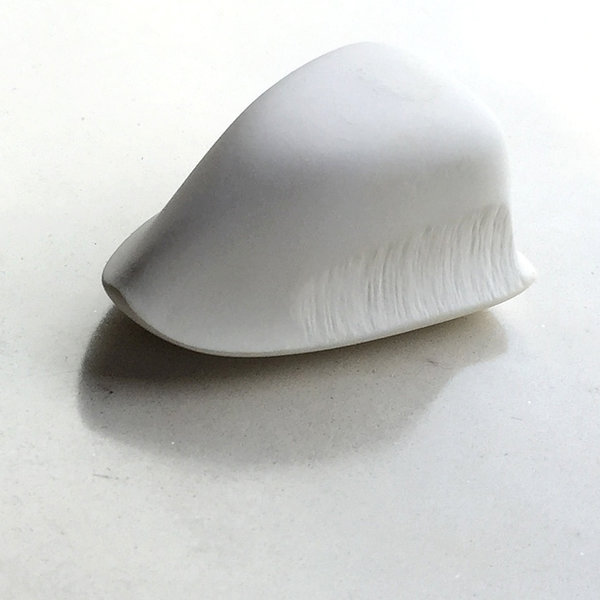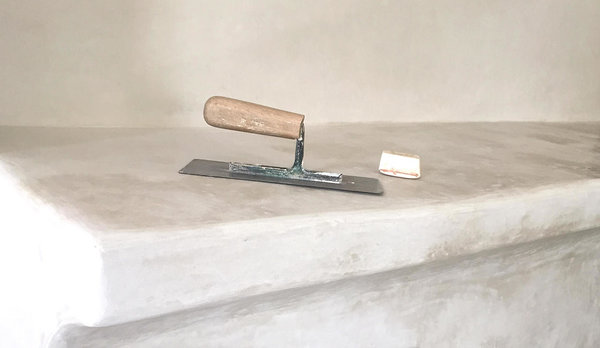Tadelakt as a material comes originally from the surroundings of Marrakech where close to the ground can be found limestone containing great amount of clay and silicon. By burning it hydraulic lime is obtained and mixing it with local ground (sands, clays, seashells) results as local Marrakech tadelakt plaster. Due to traditional production methods this plaster mixture contains a lot of lime that has burnt too much or too little and the amount of fillers is often random. This makes the quality of the Moroccon mixture uneven and using the tadelakt technique with this mixture is more difficult. When 7 years ago (after we had learnt tadelakt in Morocco) we still used actively the mixture from Marrakech, then due to the previously mentioned reasons we began to work out a tadelakt plaster based on Estonian materials.
As a result of years of experimenting we have achieved a very good plaster mixture for making a waterproof surface. In Estonia we do not have natural hydraulic lime, therefore the binder for our mixture comes from Italy and France, but this is the only foreign component in our Estonian tadelakt plaster mixture. Our first mixture had a beige colour, but during the last month we have worked out a new white mixture that is easier to tint with mineral pigments. For applying our tadelakt mixture the same technique must be used as for other tadelakt mixtures. The result is a waterproof surface finish that is suitable for the walls of wet rooms, for shower corners, baths and sinks, shelves, different waterproof items and even for heated surfaces.
An Erasmus+ project "Developing methods of teaching tadelakt and natural building and creating wider opportunities for adults to learn it" is going on and one result of the project will be a tadelakt guide. A self-builder interested in tadelakt gets from there step-by-step instructions how to apply and finish tadelakt.
Soon we will carry out some workshops of tadelakt where our professionals Kermo and Taavi also share their experiences of Erasmus+ study visit project "Complementary courses about natural finishing".
The most important to know about tadelakt is that this is not that much the material but more the technique. There are many different tadelakt plaster mixtures, but with right technique it is possible to achieve a beautiful and shiny waterproof surface of all of them.


